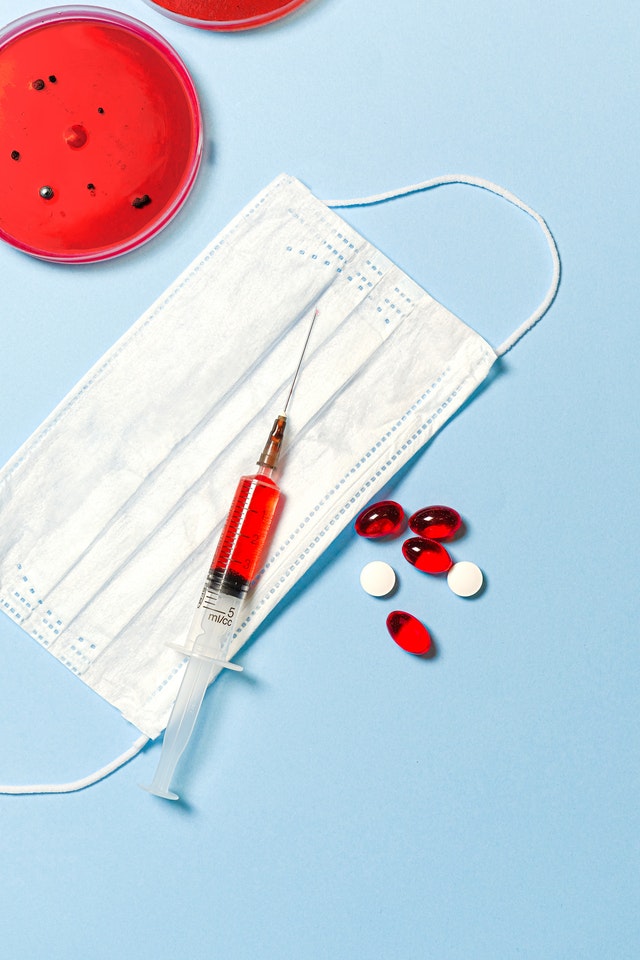What is it like being on the front-line of a medical emergency? In the current situation surrounding the Covid-19 global coronavirus pandemic, Dr. Tan Kok Kuan, resident doctor at DTAP Clinic Novena and a physician for more than 17 years, has experienced first-hand as a front-line doctor during the SARS crisis.
He shares his story, in order to shed some light on what our current medical professionals are going through now.

A junior doctor in the SARS ward
In 2003, Dr. Tan was a junior doctor at a large hospital and he was posted to the SARS ward.
Said Dr. Tan, “We worked in 2 shifts. The first ran from 8 in the morning to 5 in the evening and the second ran from 5 in the evening to 8 the next morning. My colleagues and I were assigned the permanent night shift.”
Less than 5 hours of sleep
During this period, Dr. Tan and his team got less than 5 hours of sleep per night, for seven days a week, with no weekends and public holidays.
Said Dr. Tan, “We had a home to go back to, although my wife made me walk straight from the front door into the shower and scrubbed myself down with antibacterial soap while she doused bleach over my clothes.”

However, unlike him, some of Dr. Tan colleagues were fearful of going back home because they were scared to potentially risk spreading the virus to their families.
Clothing and protective gear
To reduce the risk of contaminating their clothes with the virus when they left the hospital, Dr. Tan and his colleagues changed out of the clothes they arrived at work in, and put on a white t-shirt and sweat pants.
Said Dr. Tan “The clothes provided by the hospital smelled like bleach and some extremely caustic detergent.”
In order to visit and treat the SARS patients, doctors had to take safety precaution by wearing a full Personal Protective Equipment (PPE) suit comprising of a waterproof gown, hair cover, N95 mask, goggles and a respirator hood connected to an air pump strapped to the back of their waist.
Dr. Tan had likened the mandatory gear to what Dustin Hoffman donned in the movie Outbreak.
However he added that putting on the gear was not as bad as taking it off because everything had to be removed in a particular manner as the virus would have contaminated all the gear, with sanitising of hands being required after each and every step, in order to reduce the risk of the doctor contracting the virus.
This is because the gear had to be taken off, changed, and put on again, for every single patient in every room down a “seemingly endless” corridor.

During the current Covid-19 pandemic, medical staff at hospitals here are required to wear the same outfit to reduce contamination.
Colleagues were lost to SARS
During those trying SARS times, Dr. Tan also added that it was not just patients who were lost during the SARS outbreak. They also lost colleagues to the virus.
Said Dr. Tan, “One of our survival colleagues, a universally beloved man, got infected by SARS. While being wheeled into ICU on his bed, he gave all of us a thumbs-up. That would turn out to be the last time we saw him alive.”
Virus wrecking havoc on the lungs
The current covid-19 pandemic is similar to SARS in that it is a respiratory coronavirus and symptoms include shortness of breath as the virus wrecks havoc on the lungs.
Said Dr. Tan, “For those of you who have never had severe asthma or bronchitis, it may be hard to imagine how terrible the sensation of not being able to take a full breath is.”

He added “When your lungs fill with fluid and stiffen due to a viral pneumonia, you feel an extreme shortness of breath that stretches on for hours. The last moments will see patients gripping their loved ones so hard while they gasped for their last breath and endured their last pain with tears down their cheeks.”
However a patient dying is not the only way for the virus to be killed. The body’s natural immune system can also eliminate the virus.
Said Dr. Tan, “Either the host’s immune system kills the virus or the virus kills its host. Either way, the virus dies in the host. The virus has to infect a new host to survive beyond this host. If we stop spreading it to one another, the virus stops spreading.”
Photos: Pexels

Leave a Comment